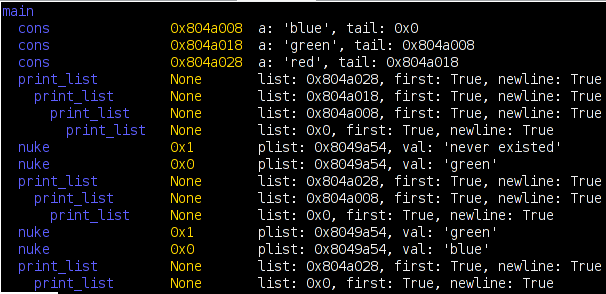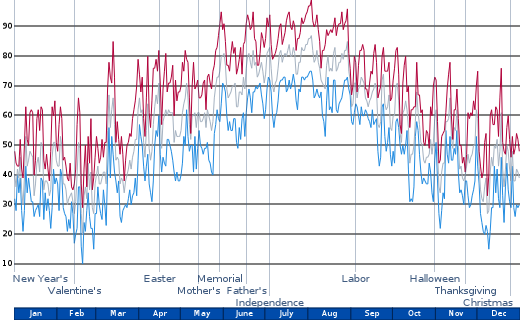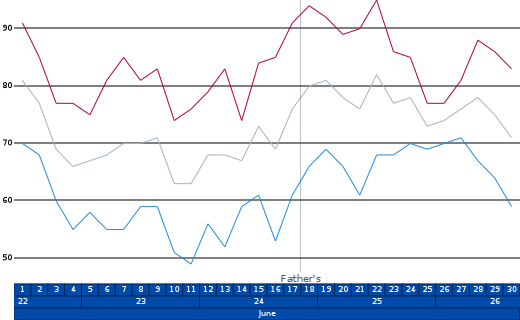So, I was playing with the fantastic Chronomancer (roc‘s announcement, project link), an Eclipse GUI for chronicle-recorder, using a trace from my PyXPCOM troubles. I discovered a lack of some symbols that seemed like they should be there and decided to then run chronicle against chronicle-query and view the problem in Chronomancer so that I might smite it. Unfortunately, some stuff didn’t show up in that trace, so I went investigating by way of enhancing chroniquery so that I might better understand the problem while also making chroniquery more usable. Sadly, there’s still more work to be done, but I have a picture to show and I understand a good deal of the chronomancer internals now and how to drive chronicle-query better.

The above is pretty representative of what chroniquery’s chronisole can now do. It’s an invocation of chronisole.py trace fancy -f main. The ‘fancy’ program builds a linked list using ‘cons’, uses the recursive ‘print_list’ to print the list, and uses the iterative ‘nuke’ to delete entries from the list. ‘cons’ returns the newly allocated list entry/cons cell, and nuke returns 0 if the entry existed and was nuked or 1 if it didn’t exist. We traced main because of the -f; we could start with any bunch of functions as the root, and can use -x to filter out noisy functions from the recursive function discovery. Return values and parameters are shown.
Of course, even in this example, the first/newline booleans are wrong, presumably indicative of some wackiness/off-by-one-error in my mechanism for determining the sub-called functions’ function entry timestamps. I’m confident I’m doing some foolish things, but it will have to wait until the weekend and a more well-rested brain. I’ve pushed the changes to the bzr tree if anyone wants to do my work for me.


